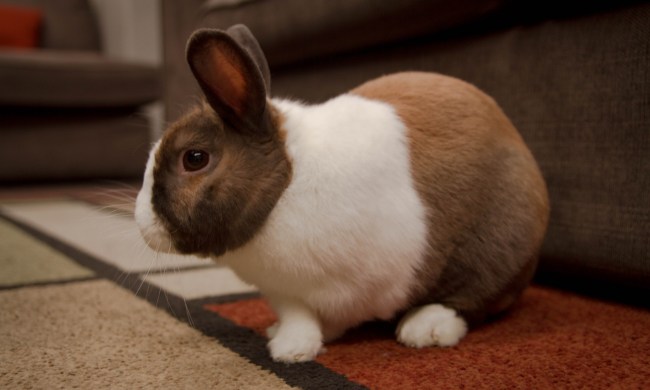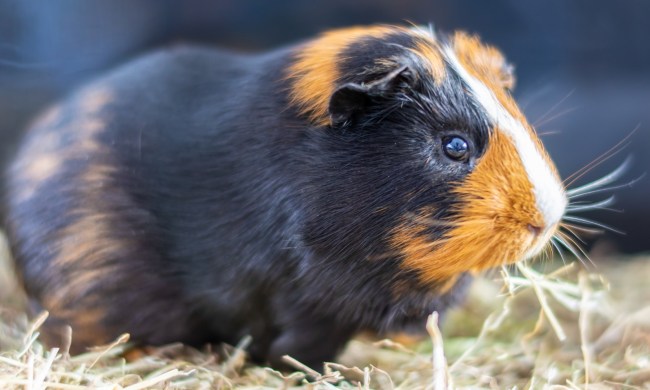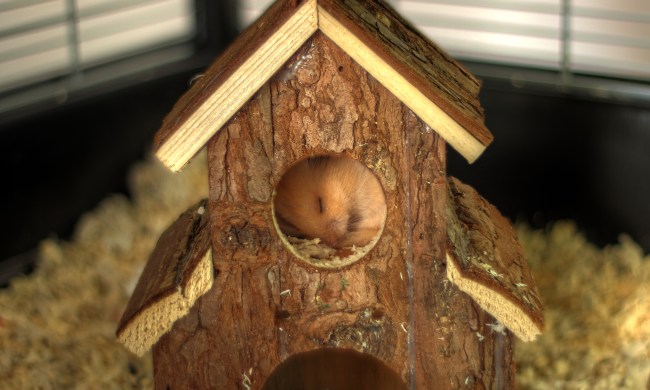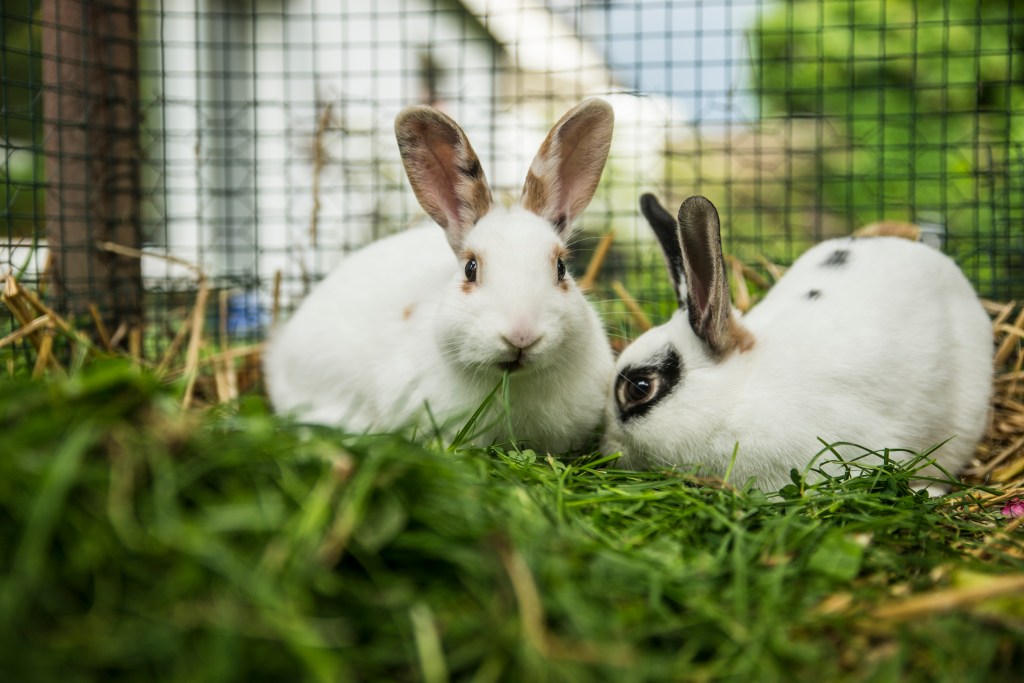
What’s better than one pet rabbit? An entire litter of bunnies (as long as you’re prepared for them, of course). If you’ve been wondering, “Is my rabbit pregnant?” now is the time to find out for sure. After all, you don’t want to be caught unaware and suddenly have a whole new colony of animals in your hutch.
Sometimes, lady bunnies can take on the behaviors of expectant mamas, but it’s actually a false pregnancy. The best way to find out if your rabbit is pregnant is to take her to the vet and have them confirm it. However, when you’re figuring it out yourself, you should look for the signs that a rabbit is pregnant. If you spot these behaviors, be sure to call your animal doctor.
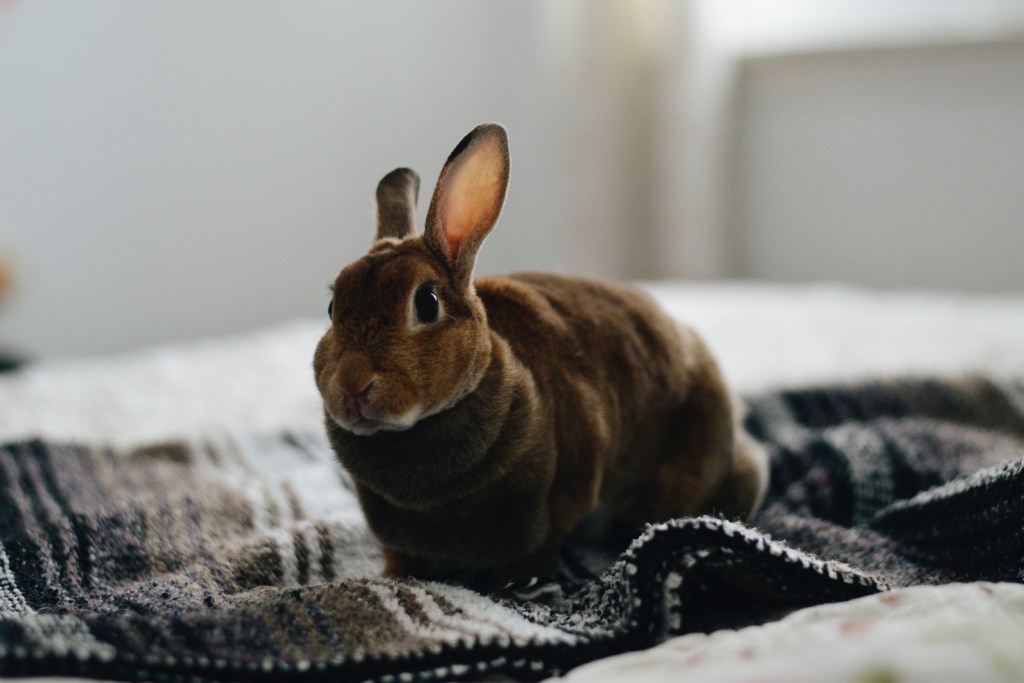
She’s recently been with an intact male
It’s certainly one of the most obvious pregnant rabbit signs, but the bunny gestation period is surprisingly short. The babies will remain in utero only for about a month before the mother gives birth, so if she hasn’t been near a mate in that time, she’s probably not pregnant. When you see pregnancy symptoms and she’s not carrying offspring, take her to the vet to find out what else might be the issue. If she is carrying a litter, your vet might do an ultrasound to check that everything’s going well.
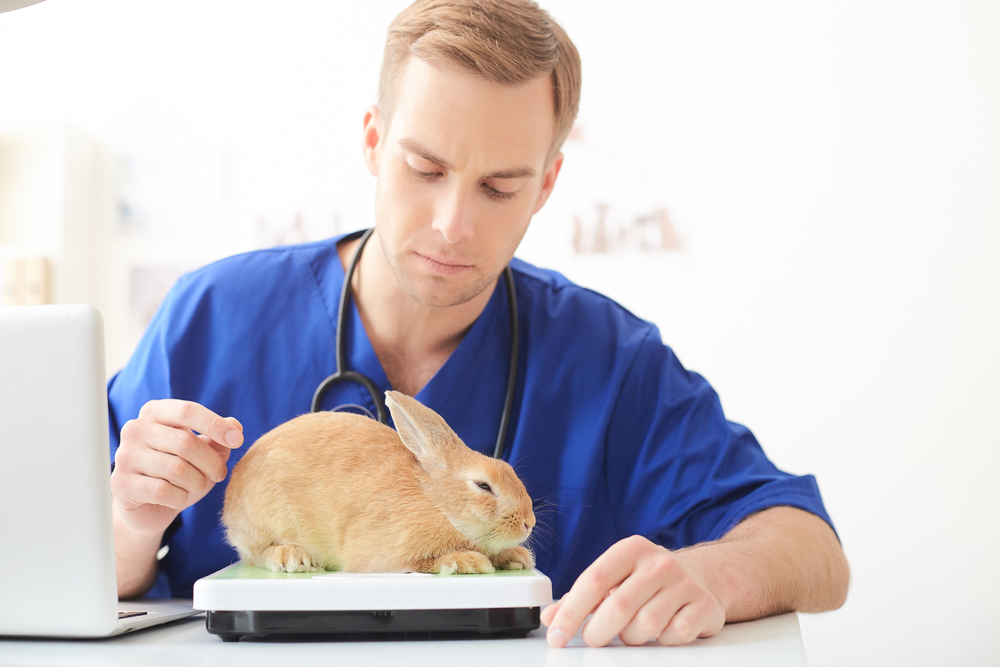
Your rabbit’s gaining weight
Just like with humans and other mammals, your little animal will get bigger when she’s expecting. However, it may be tricky to notice a difference with the naked eye. Take your doe’s weight before pregnancy (but after she’s reached sexual maturity) and weigh her each week after she’s been bred. She might gain only a few ounces, but a digital scale will track her increase. For consistency, always weigh her before feeding. If you discover she’s pregnant, increase her daily food intake, especially the alfalfa, as she needs more nutrients during this time.
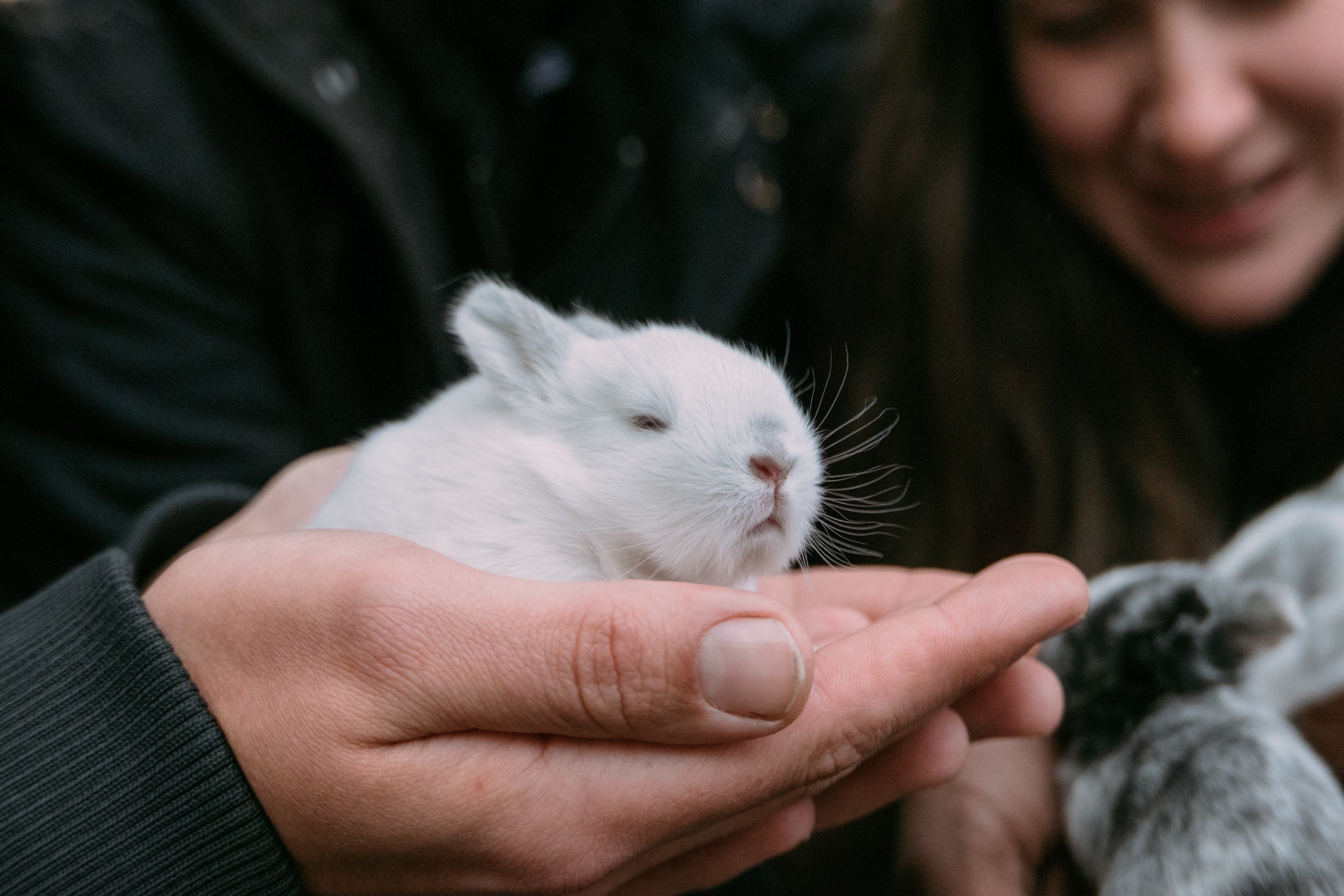
You feel her babies
Surprisingly, you’ll be able to feel the tiny creatures on the way by stroking her belly. You’ll notice these pea-sized infants at around 10 days. Be careful with them, though, as pushing too hard can hurt the not-fully-formed bunnies. After two weeks, you shouldn’t try this at all, and a vet will always be your safest bet if you don’t have much experience handling pregnant rabbits.
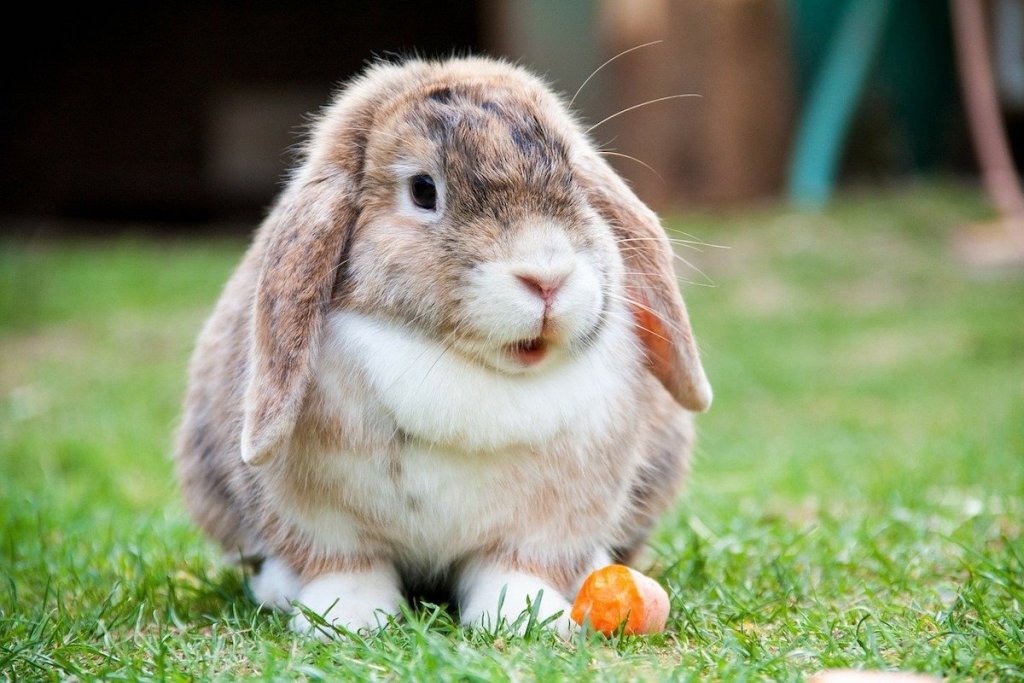
Her mood changes
Your seemingly loving rabbit suddenly doesn’t like you. Did you do something wrong? Probably not. If she’s pregnant, she may become aggressive, even growling at you and her friends. Be extra careful around her during this time as moms sometimes bite and often don’t want to be handled. It’s best to give her space for now. She’ll be back to normal soon enough. While moodiness isn’t a clear sign on its own to prove that she’s bringing you little ones, coupled with other factors, it can indicate that her due date is approaching.
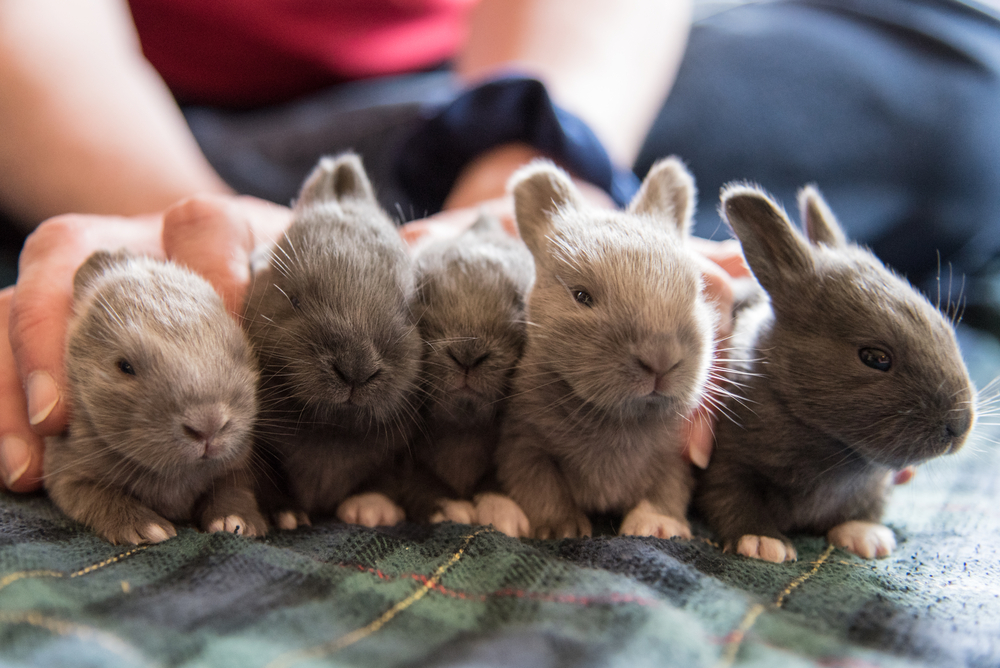
She starts nesting
One of the most obvious signs before a rabbit gives birth is nesting. The mom-to-be will begin to create her roost about a week before she gives birth, which can help you set a timeline if you weren’t quite sure when she conceived. Your rabbit will stack bedding into a corner or dig to make a small den. If there isn’t sufficient material to suit her, she might even rip out her own hair to enlarge the nest and make a blanket for her bunnies. This means that your new pets will be here any day now.
Give her plenty of hay to finish her building and a box to help her along. You’ll want to begin to monitor her for signs of labor at about 28 days, though 31 is typical. If it’s been more than 35 days, she needs to be induced by a specialist.
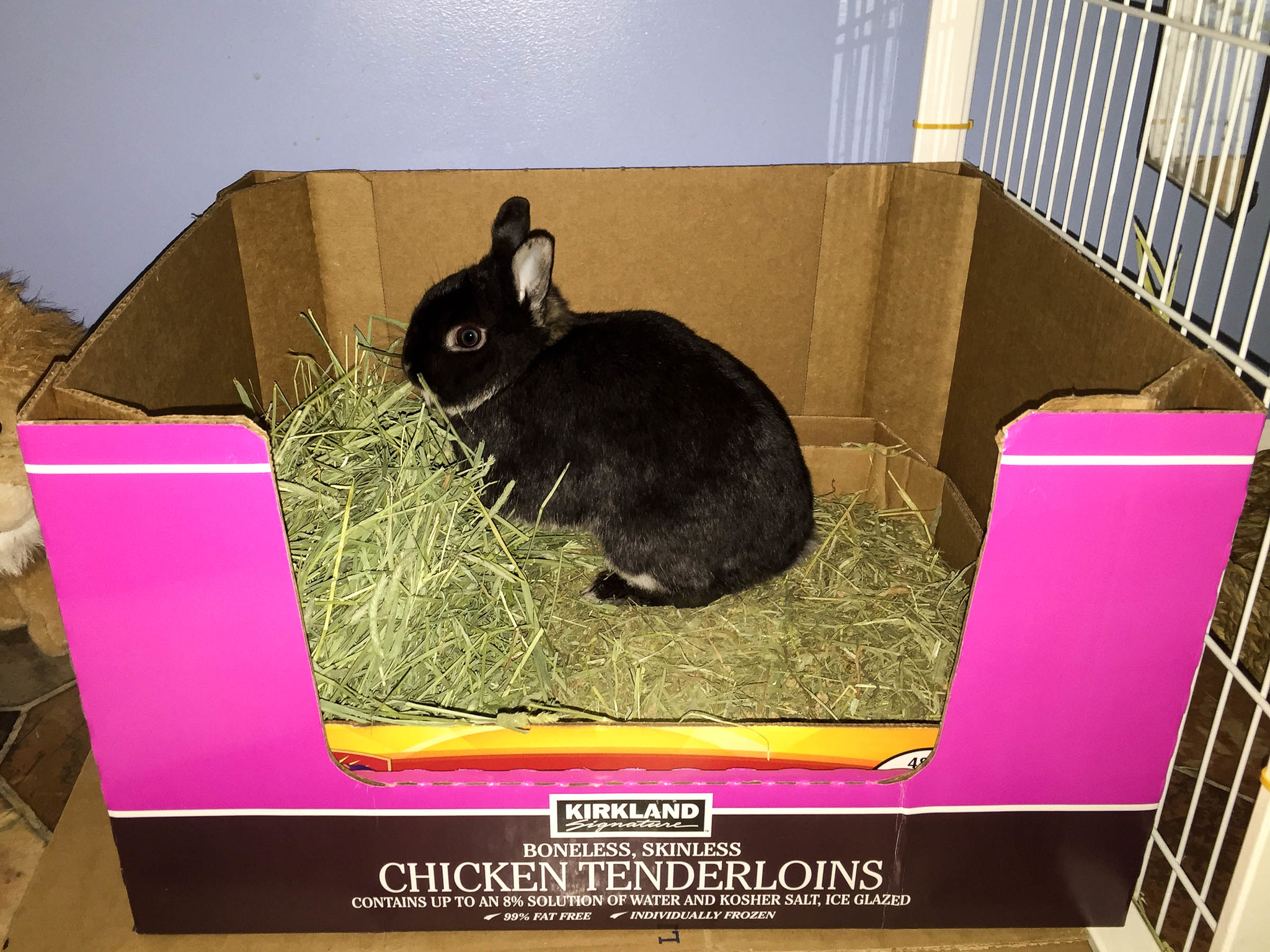
Can you touch a pregnant rabbit?
In addition to becoming aggressive, rabbits tend to shy away from others toward the end of their pregnancies. It might seem like a hard time to stay away, but mama bunnies know exactly how to do this on their own. Let her have space for her birth and then check on the newborns when she’s done. While you’re at it, try to give her a hutch to herself for the home stretch — she doesn’t want the company of her own kind either. The most important part is to reduce her stress (and temptation to turn mean) during this time. One option: Put up a camera in an out-of-the-way spot where it won’t bug her, but allows you to keep an eye on both mom and the babies.
When you finally do enter the mother’s house, you could find up to 15 babies, as rabbit litters can be quite large. We hope all the babies make it, but you should remove any kits that don’t survive. Then retreat while she nurses and bonds with her new family. Keep her away from mates for a while so you don’t have too many little guys at once, and spay or neuter when you’re ready to stop breeding.

